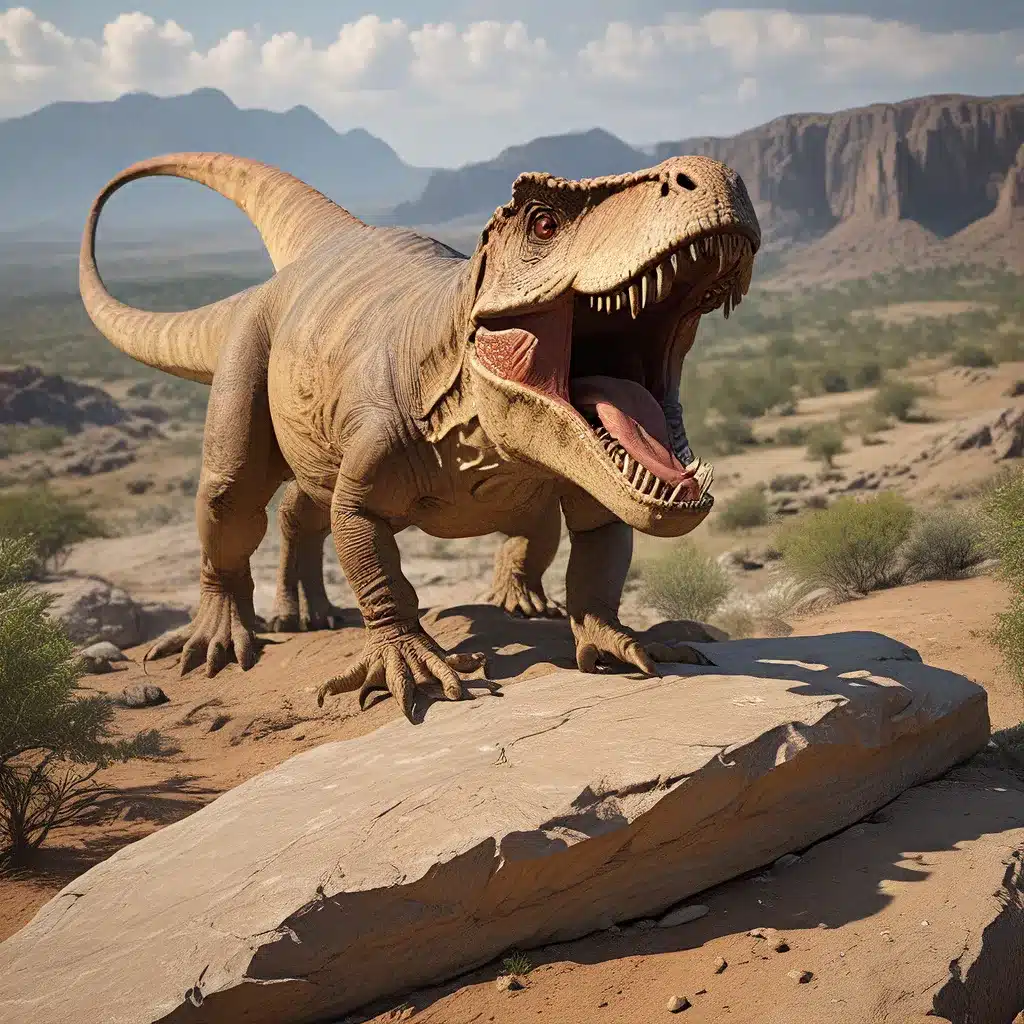
Uncovering the Secrets of Dinosaur Fossil Beds
The Dinosaur National Monument in Utah is a treasure trove of Jurassic history, home to one of the world’s greatest deposits of fossil dinosaur bones. This extraordinary site has yielded invaluable insights into the diverse and awe-inspiring reptiles that once roamed the Earth, shedding light on their anatomy, behaviors, and the environments they inhabited millions of years ago.
The discovery of this fossil-rich quarry can be traced back to the late 19th century, when paleontologists began uncovering the remains of these ancient creatures in the region. In 1893, O.A. Peterson from the American Museum of Natural History reported the presence of dinosaur bones in the area, setting the stage for a remarkable scientific expedition led by Earl Douglass of the Carnegie Museum in 1908.
Douglass and his team embarked on an extensive excavation, gradually uncovering a vast trove of well-preserved Apatosaurus, Diplodocus, Stegosaurus, and other dinosaur skeletons. The sheer quantity and variety of the fossils found in this single location was unprecedented, leading Douglass to conclude that he was dealing with a “dinosaur fauna” – a diverse assemblage of these ancient reptiles from an entire region, rather than a localized deposit.
The quarry’s geographic setting and the sedimentary features of the surrounding rock layers provided crucial clues about the environmental conditions that prevailed during the Jurassic Period, when these creatures roamed the Earth. Douglass recognized that the site represented an ancient river delta, where the carcasses of various dinosaurs had accumulated and become buried over time, eventually fossilizing and preserving their remains.
Unraveling the Diversity of Dinosaur Species
The Dinosaur National Monument has yielded an astonishing array of dinosaur species, showcasing the incredible diversity of these reptiles during the Jurassic Period. The two main orders of dinosaurs, Saurischia and Ornithischia, are both represented in the fossil record here.
Among the Saurischia, or “lizard-hipped” dinosaurs, the excavations have uncovered numerous specimens of the massive, long-necked Apatosaurus and Diplodocus, as well as the ferocious Antrodemus, a large carnivorous theropod. These plant-eating and meat-eating saurischians display a wide range of adaptations, from the towering stature and powerful jaws of the predators to the elongated necks and specialized dentition of the herbivores.
The Ornithischia, or “bird-hipped” dinosaurs, are represented by equally fascinating finds, including the armored Stegosaurus with its distinctive rows of bony plates and tail spikes, the horned Triceratops, and the agile, bipedal Camptosaurus and Laosaurus. These plant-eaters showcase the remarkable innovation and diversification of dinosaur body plans and feeding strategies.
The sheer abundance and exceptional preservation of the fossils at the Dinosaur National Monument have provided researchers with an unprecedented opportunity to study the detailed anatomy, growth patterns, and even the potential behaviors of these ancient reptiles. The discovery of complete skeletons, articulated vertebral columns, and even fossilized skin impressions has greatly enhanced our understanding of how these animals moved, interacted, and adapted to their environment.
Reconstructing the Jurassic Landscape
By carefully analyzing the geologic features and sedimentary layers surrounding the dinosaur fossils, researchers have been able to piece together a vivid picture of the Jurassic environment that once existed in the region. The Morrison Formation, the rock unit that contains the Dinosaur National Monument’s fossil deposits, reveals a landscape dominated by vast, meandering rivers, swamps, and floodplains, with towering mountains to the west.
This ancient environment, which flourished around 150 million years ago, supported a diverse array of plant life, from lush, tropical-like forests to fern-covered marshes. The presence of fossilized horsetail rushes, cycads, and other now-extinct flora provides valuable clues about the climatic conditions and ecosystem dynamics that prevailed during the Jurassic.
Interestingly, the Jurassic world was not solely the domain of dinosaurs. The fossil beds have also yielded the remains of primitive mammals, crocodiles, turtles, and even the enigmatic, flying reptiles known as pterosaurs. This rich tapestry of life paints a vivid picture of a bygone era, when these diverse creatures coexisted in a sprawling, semi-tropical landscape.
The preservation and subsequent exposure of these fossils at the Dinosaur National Monument has been a remarkable feat, involving decades of careful excavation, transportation, and conservation efforts by dedicated paleontologists and museum staff. The sheer scale and complexity of this undertaking, from the initial discovery to the eventual public display of these priceless specimens, is a testament to the unwavering commitment of the scientific community to unlocking the secrets of the past.
The Enduring Legacy of Dinosaur National Monument
The Dinosaur National Monument stands as a testament to the extraordinary diversity and evolutionary success of the dinosaurs during the Jurassic Period. The wealth of fossil material found within its boundaries has not only enriched our understanding of these ancient reptiles but has also captivated the public’s imagination, inspiring countless museum exhibits, documentaries, and scientific explorations.
As we continue to unravel the mysteries of the past, the Dinosaur National Monument remains a shining example of the power of scientific discovery and the importance of preserving our natural heritage. Through the ongoing study and interpretation of these fossils, we can gain invaluable insights into the complex and ever-evolving story of life on Earth, reminding us of the enduring legacy of these remarkable creatures that once ruled the world.


